How To Install Kitchen Cabinets
Installing kitchen cabinets is a rewarding yet intricate process that can greatly elevate your kitchen's functionality and appeal. Learning the effective steps involved in installation is important to achieving a professional finish and long-lasting results. Once you familiarize yourself with the proper techniques and tools, you can transform your kitchen space without encountering pitfalls.
How to Install Cabinets in Your Kitchen
1. Gather Your Tools and Materials
Before learning how to hang kitchen cabinets, the first step is collecting the necessary tools and materials. Some of these include:
Drill
Level
Tape measure
Screwdriver
Stud finder
Brackets and screws
Clamps
2. Plan and Measure
For a successful cabinet installation project, you need meticulous planning to install the cabinet perfectly. Begin by using measuring tape to assess the available wall space, marking the exact locations for your cabinets. Include the dimensions of appliances in your measurements to ensure adequate spacing. Drafting a layout plan can help you visualize your kitchen design's overall arrangement and flow.
3. Locate and Mark Studs
Use a stud finder to accurately locate the stud locations where the cabinets will be mounted. Mark these positions with a pencil. Since cabinets must be securely anchored to the wall studs to prevent buckling or sagging, it's important to identify them precisely.
4. Install the Upper Cabinets First
Initiate the installation with the upper cabinets to avoid obstructing your workspace. Use a level to achieve proper alignment of the cabinet's base. Secure the cabinets to the wall using brackets and screws. Having a partner hold the cabinets in place can be incredibly helpful while you fasten them.
5. Attach the Lower Cabinets
After firmly installing the upper cabinets, proceed to the lower cabinets. Position them and check their alignment to ensure they are straight. Use brackets and screws again to attach them to the wall and to each other, all the while securely tightening everything.
6. Install Countertops
With the lower cabinets stable, measure and install the countertops. Cut or fit the countertops precisely to achieve a perfect fit. Secure the countertops to the lower cabinets following the manufacturer's instructions to ensure stability.
7. Finish with Hardware and Trim
Install cabinet doors, drawers, and hardware like handles and knobs. Add trim around the cabinets once everything is mounted securely to conceal gaps and provide a polished, finished appearance.
8. Clean Up
Lastly, tidy up the workspace by removing debris and inspecting your cabinets for stability and alignment. Adjust any doors or drawers to ensure they open and close smoothly, completing your installation precisely.
How Much Do Kitchen Cabinets Cost?
The cost of installing kitchen cabinets usually depends on the type of materials used, the complexity of the installation, and the kitchen's size. On average, homeowners can expect to spend between $3,000 and $12,000 on cabinet installation. This range typically includes labor costs, materials, and additional features such as custom cabinetry or hardware.
Material Quality
The type of material chosen can affect the cabinet's overall pricing. They can be made from different materials, including solid wood, plywood, particleboard, and medium-density fiberboard (MDF). Solid wood cabinets are the most expensive because of their durability and aesthetic appeal. At the same time, particleboard or MDF can lower costs but may not provide the same longevity or visual quality.
Cabinet Style and Design
Custom, semi-custom, and stock cabinets have varying price points. Custom kitchen cabinets, with custom dimensions and designs, are typically the most costly. Semi-custom choices balance personalization and cost, while stock cabinets are pre-manufactured and usually affordable yet limited in style and feature options.
Size of the Kitchen
The kitchen's dimensions can affect the quantity of cabinets needed, influencing the overall cost. A larger kitchen will likely need more cabinets, increasing material costs and installation fees.
Installation Complexity
The complexity of the cabinet installation can also impact costs. If the layout requires heavy modifications during the installation, the additional labor efforts from contractors can raise the overall pricing. Furthermore, installing unique features like pull-out shelves or lazy Susans can incur extra charges.
Finishing and Hardware
The cabinet finish will vary in price, with specialty finishes generally costing more. Additionally, the hardware used can add to the overall expense, especially if you choose high-quality or designer options.
Labor Costs
Labor costs will depend on geographic location, contractor experience, and additional services provided. In some areas, skilled carpenters may demand a higher price, impacting the total installation cost. If you plan on hiring contractors, you'll need to obtain multiple quotes to find a balance between quality and affordability.
Miscellaneous Costs
Finally, other factors like delivery fees, cabinet accessories, and disposal of old cabinetry can contribute to the entire expense. Reviewing and understanding these elements can help you become well-prepared for the financial commitment needed for your kitchen cabinet installation.
Types of Kitchen Cabinets to Install
Stock Cabinets. These are pre-assembled cabinets available in standard sizes and styles. Stock cabinets are the most affordable option but offer limited design flexibility.
Semi-Custom Cabinets. This type of cabinet offers a balance between customization and affordability. They come in standard sizes but have more options for finishes, materials, and some organizational features.
Custom. Custom cabinets are made-to-order based on specific designs and dimensions. They are typically the most expensive option but allow full personalization with their style, materials, and functionalities.
Ready-to-Assemble (RTA) Cabinets. RTA cabinets are shipped unassembled, requiring you to assemble them on-site. They are a budget-friendly choice and often come with various design options.
Inset Cabinets. Inset cabinets have doors that fit inside the cabinet's frame, creating a flush appearance. This style is typically more expensive due to the precision required in craftsmanship.
Shaker Style Cabinets. Known for their simple and classic design, Shaker cabinets are recognized by their five-piece door design. They offer versatility and can fit well in various kitchen styles.
Freestanding Cabinets. These cabinets are not built into the kitchen structure, allowing for flexibility in arrangement. They can be used as additional storage or workspaces, making them suitable for smaller kitchens.
Glass-Front Cabinets. Glass-front cabinets feature transparent doors, revealing the items inside. They add visual interest to kitchens, allowing homeowners to showcase decorative dining or glassware.
Acquire Quality Kitchen Cabinets With Collaborative Kitchen & Design Center in Massachusetts
You don't need to stress about finding the right kitchen cabinets anymore because Collaborative Kitchen & Design Center is here to provide them. We offer multiple types of cabinets that work well with most kitchen designs. You can choose traditional, transitional, or modern kitchen cabinets, giving you a wide range of options.
If you prefer to view our kitchen cabinets up close, you may visit our showroom in Marlborough Massachusetts. Once you’ve chosen your desired cabinets for your kitchen, we can do the installation job with ease. You can definitely expect us to arrive at once if you’re based near Worcester, Framingham, Foxborough, and Southborough.
Call us right away to get more details about our kitchen cabinets.










